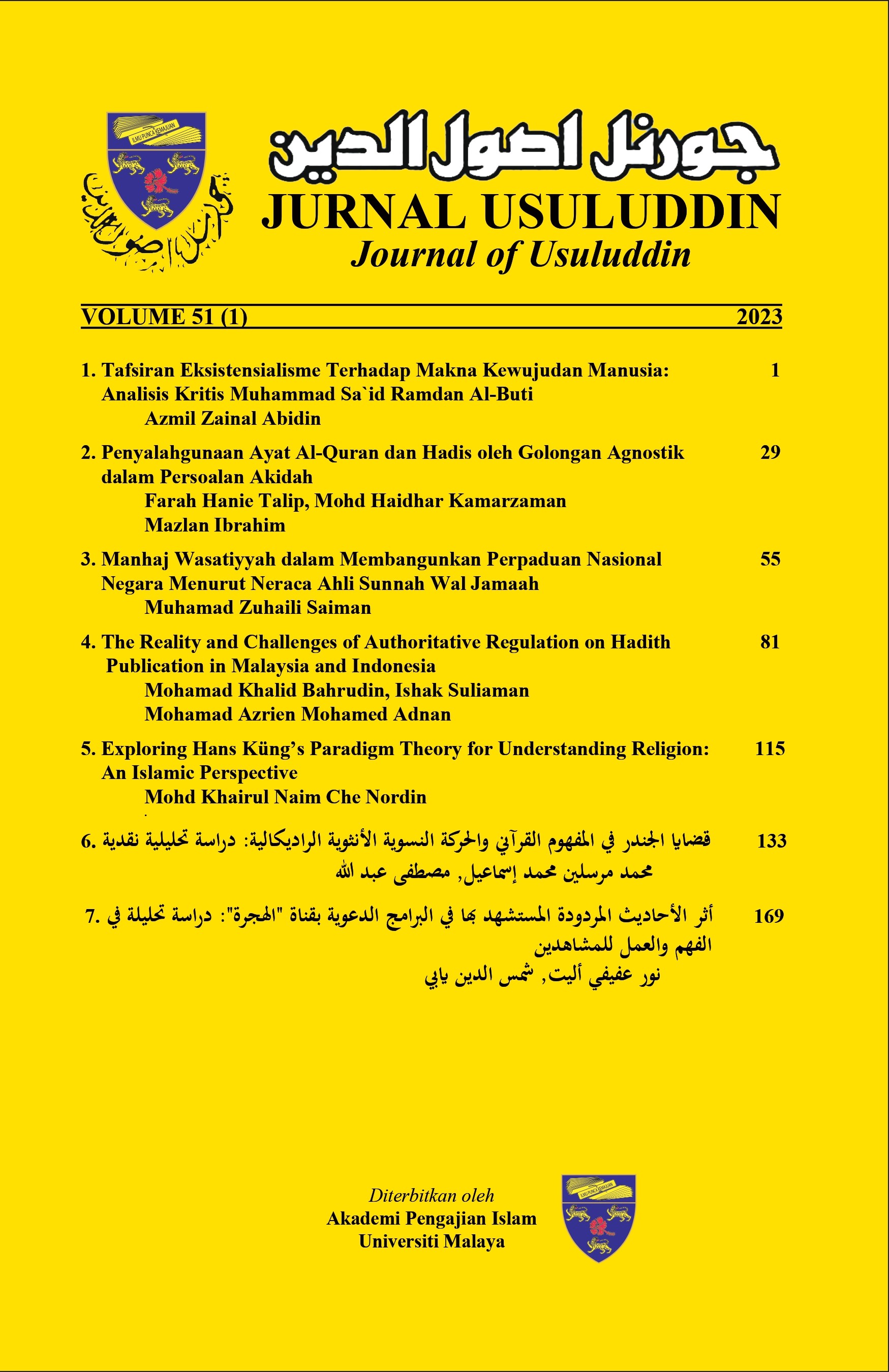أثر الأحاديث المردودة المستشهد بها في البرامج الدعوية بقناة "الهجرة": دراسة تحليلة في الفهم والعمل للمشاهدين Effect of Rejected Hadith Used in Dakwah Program Broadcasted in TV Al Hijrah: Study on Understanding and Practices among Audiences
Main Article Content
Abstract
Muslims in Malaysia nowadays has been utilizing the television as a medium in learning about Islamic knowledge, resulting in a steady growth of religious television programs that covers a variety of concept which are broadcasted to satisfy such needs like TV Al Hijrah. However, there has been widespread issues regarding the use of fabricated hadith in religious programs and the audience’s varying degree of education and knowledge makes the issue even more pressing. Thus, a study is conducted to identify the level of understanding and the daily practice of the audiences towards these hadith spread through the religious program that was broadcasted in TV Al Hijrah. The necessary data was acquired through a set of inquiry instruments and was later analyzed through the descriptive analysis method in order to get the value of frequency, percentage, min and standard deviation. The research finds that the audience’s level of understanding towards the rejected hadith was at a middle-to-high level with the min score of 3.38, meanwhile their daily practice level was also at a middle-to-high level with the min score of 3.04. The research result implies that there is a need to form a guideline, involving concerned parties, to ensure that such issues will be resolved, and to ensure that the audience can safely utilize television as a medium to receive Islamic knowledge.
